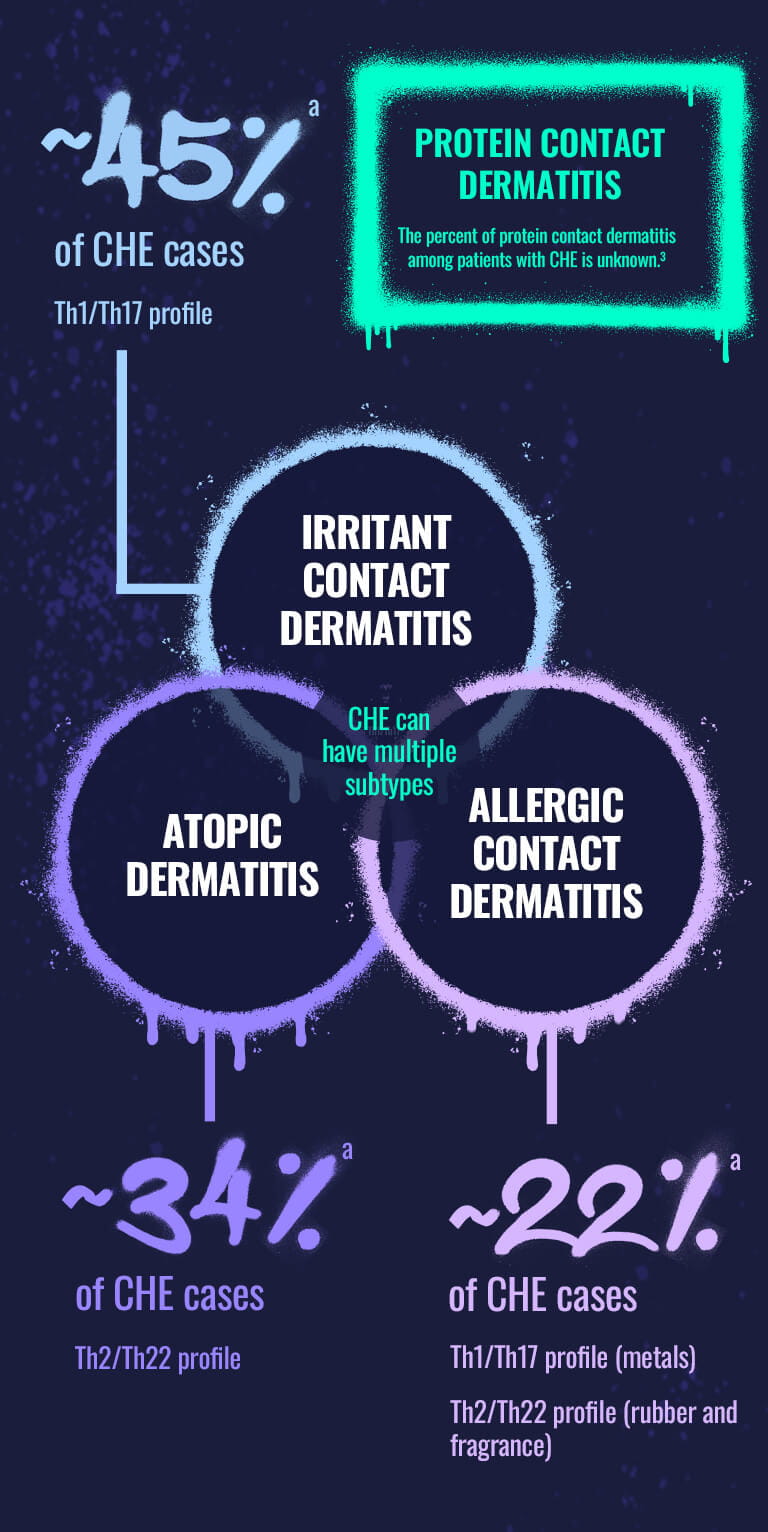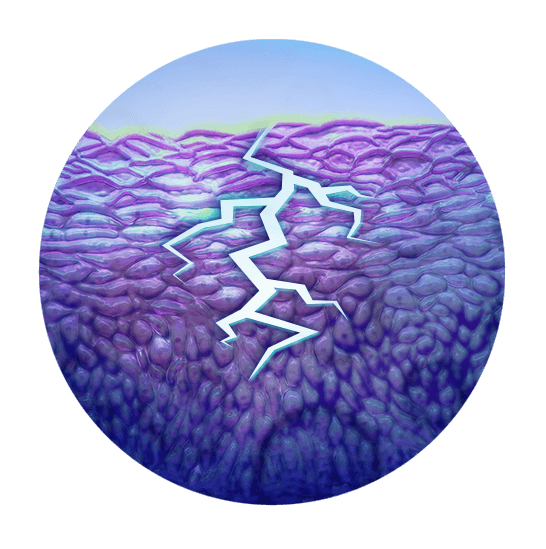Learn about the first and only FDA-approved treatment for adults with moderate-to-severe chronic hand eczema (CHE)

THE CHALLENGE OF DIAGNOSING CHE
Patients with chronic hand eczema (CHE) may present with multiple subtypes and each subtype has unique immune signatures1,2
CHE is not just atopic dermatitis (AD) of the hands2


Dr. Omar Noor, MD, FAAD, talks Immune Profile
Why can't CHE be treated the same way as AD? Learn about the broad immune profile seen with CHE and why it matters.
CHE SUBTYPES
Chronic hand eczema is often multifactorial, and the relationship between clinical patterns and etiological diagnoses is not a simple one.
Mixed forms of subtypes may exist in which more than one etiological and morphological subtype are present. Additionally, there is no reliable correlation between morphology and etiology; etiology cannot be diagnosed based solely on the appearance of hands.4,5
ETIOLOGICAL SUBTYPES INCLUDE4
IRRITANT CONTACT DERMATITIS (ICD)
- Prolonged, repeated irritant exposure (e.g., detergents)
- No relevant contact allergen identified
ATOPIC DERMATITIS (AD)
- Typically, a medical history of atopic dermatitis
- Predisposes patients to develop ICD
- May have AD elsewhere
ALLERGIC CONTACT DERMATITIS (ACD)
- Hand eczema caused by relevanta contact allergens (e.g., metals, fragrances)
- Identified by a positive patch test
PROTEIN CONTACT DERMATITIS
- Hand eczema in patients chronically exposed to proteinsb (e.g., latex, animal hair)
- Identified by a positive prick test
MORPHOLOGICAL SUBTYPES INCLUDE4
HYPERKERATOTIC HAND ECZEMA
- Typically palmar
- More common in men
- Associated with tobacco smoking
ACUTE, RECURRENT VESICULAR HAND ECZEMA
- Typically, palmar/fingers
- Intensely pruritic
- Associated with different etiologies
NUMMULAR HAND ECZEMA
- Typically on the dorsal hands
- Coin-shaped lesions
- Often associated with allergic dermatitis
PULPITIS
- Found on the fingertips
- Often caused by irritants, but may be related to atopic dermatitis or ACD

Dr. Naiem Issa, MD, PhD, FAAD, talks CHE Subtypes
Find out how CHE manifests and why it can be different for everyone.
aRelevant means that there is a current exposure of the hands to the allergen, bfood, latex, and any other biologic material.4
More than 50% of patients with chronic hand eczema can have more than 1 additional diagnosed subtype.6
CHE PATHOPHYSIOLOGY

Chronic hand eczema is associated with dysregulation of inflammatory responses, disruption of the skin barrier, and alterations in the skin microbiome.7

Its pathogenesis is further complicated because of the potential for overlapping immune pathways, which are driven by JAK-STAT signaling.2,7

Discover the major impact of CHE on your patients

WHEN THE STANDARD OF CARE IS NOT ENOUGH
Currently, topical corticosteroids (TCSs) are recommended as the short-term, first-line treatment for chronic hand eczema.3
Yet, for long-term intermittent use, their efficacy is limited, and TCSs have been associated with adverse events.2,3
Additionally, therapies targeting the type 2 immune response may not be effective in all CHE subtypes.2
Now, there is an FDA-approved treatment developed specifically for chronic hand eczema8
CHE=chronic hand eczema; JAK-STAT=Janus kinase signal transducer and activator of transcription.
References: 1. Apfelbacher C, et al. Acta Derm Venereol. 2014;94(2):163-167. doi:10.2340/00015555-1632 2. Dubin C, et al. Ther Clin Risk Manag. 2020;16:1319-1332. doi:10.2147/TCRM.S292504 3. Diepgen TL, et al. J Dtsch Dermatol Ges. 2009;7(suppl 3):S1-S16. doi:10.1111/j.1610-0387.2009.07061.x 4. Thyssen JP, et al. Contact Dermatitis. 2022;86(5):357-378. doi:10.1111/cod.14035 5. Tauber M, et al. J Eur Acad Dermatol Venereol. 2024;38(6):997-998. doi:10.1111/jdv.20023 6. Agner T, et al. J Eur Acad Dermatol Venereol. 2015;29(12):2417-2422. doi:10.1111/jdv.13308 7. Lee GR, et al. Dermatol Ther. 2019;32(3):e12840. doi:10.1111/dth.12840. 8. ANZUPGO. Prescribing Information. LEO Pharma Inc.




